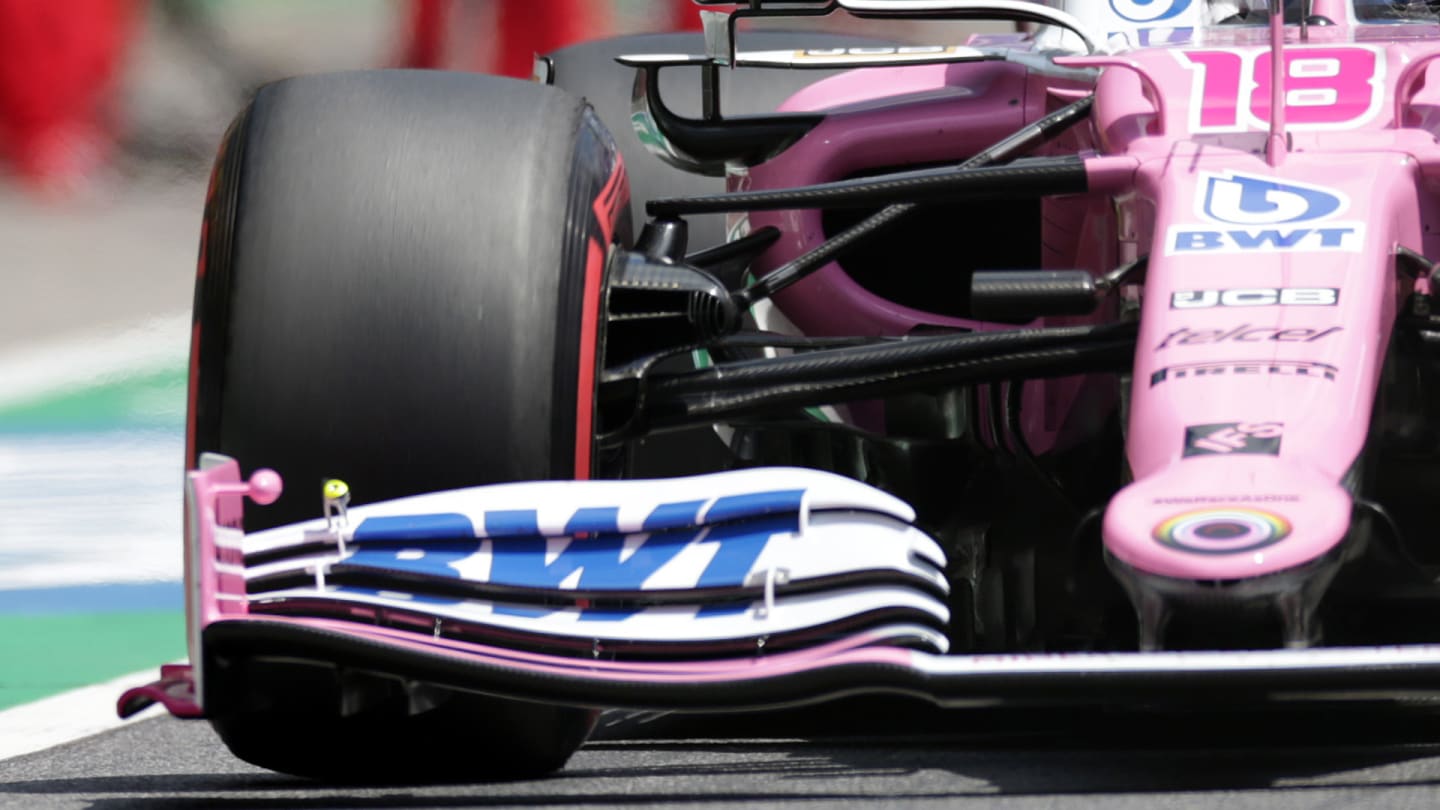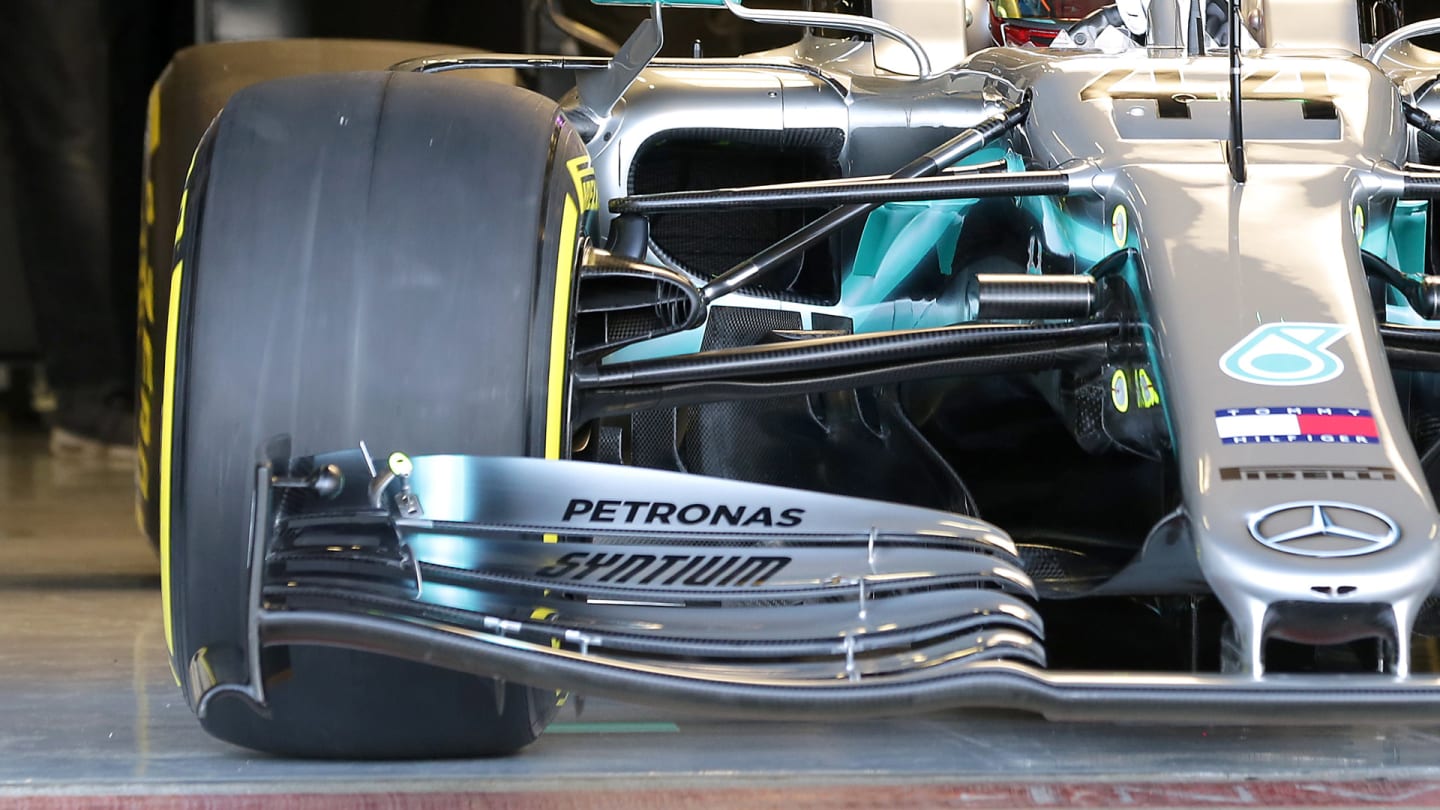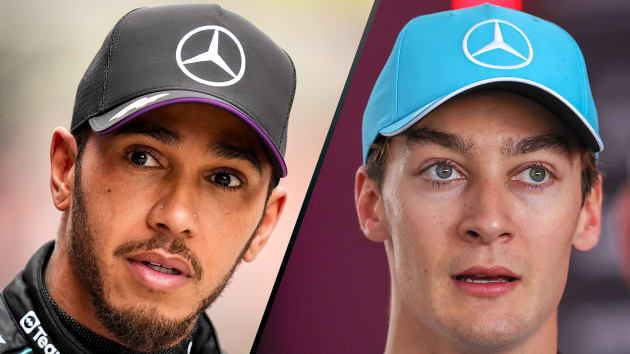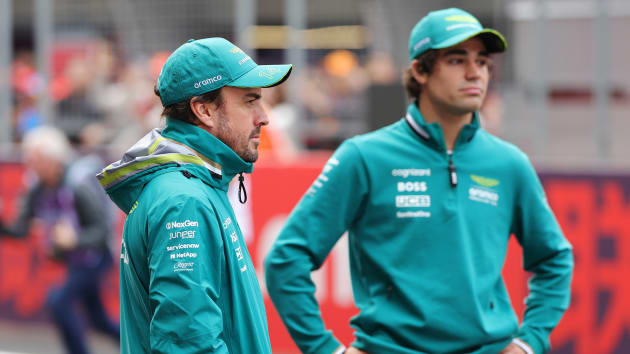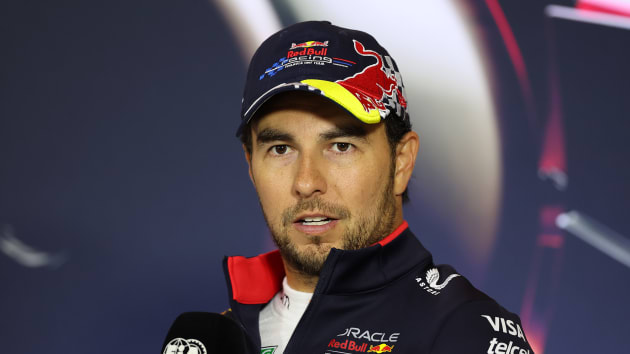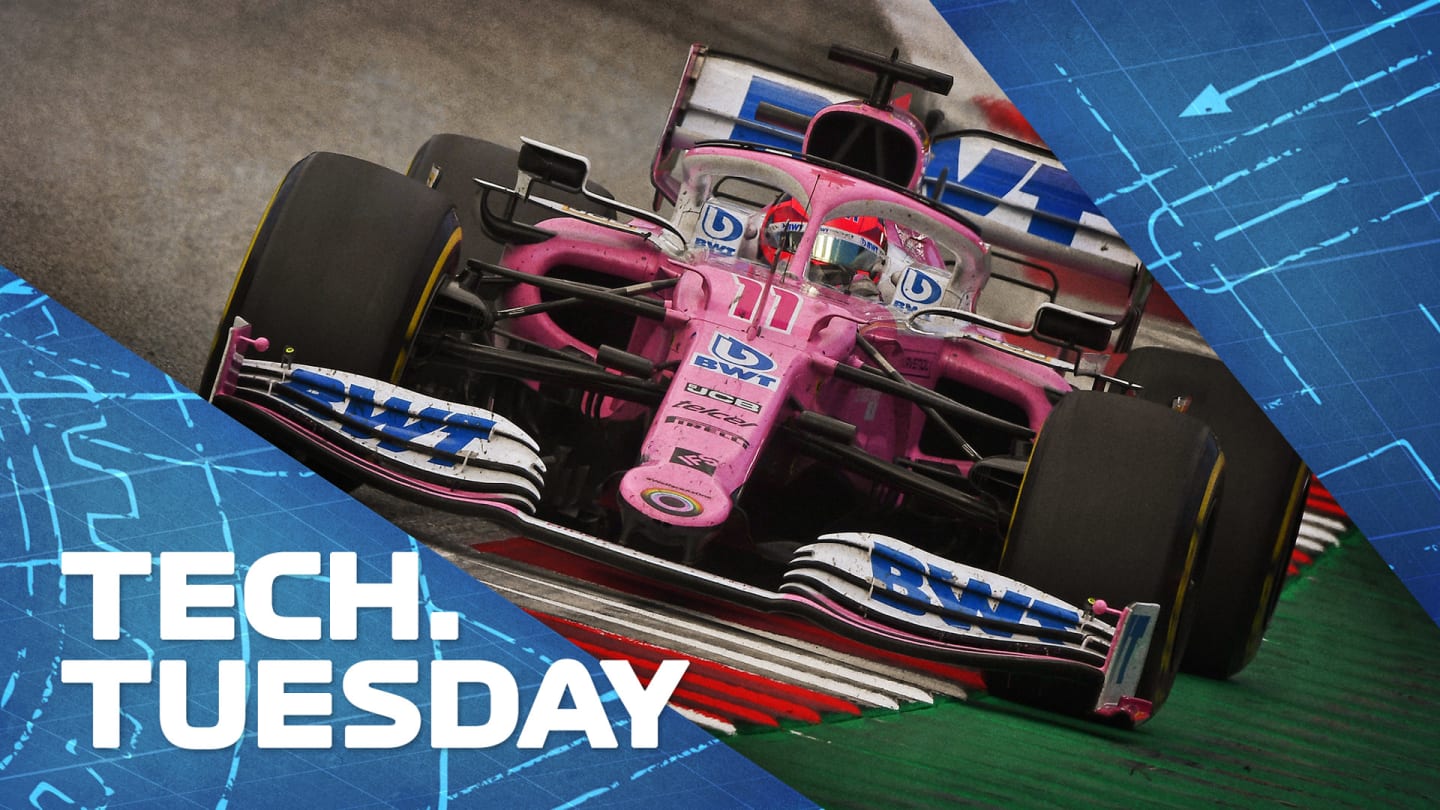
Technical
TECH TUESDAY: Under the skin of Renault's protest of Racing Point's RP20
Share

There was drama on Sunday evening at the Red Bull Ring after the Styrian Grand Prix when Renault submitted a formal protest against Racing Point about the legality of their RP20 cars.
READ MORE: Renault launch protest regarding legality of Racing Point after Styrian GP
The Silverstone-based team’s new car – which uses the Mercedes power unit and gearbox – drew a lot of attention at pre-season testing back in February when it was dubbed ‘the pink Mercedes’ for its apparent similarities to the Silver Arrows W10 car which won the championship in 2019.
Racing Point insisted at the time that while they had followed the same design philosophy as Mercedes – and even used photographs to try to mimic some parts of the car – the RP20 was designed in house, and they had not broken any rules.
“I can tell you absolutely, categorically all those designs are Racing Point from absolute scratch,” Racing Point Technical Director Andrew said in Barcelona. “There has been no transfer of information on listed parts from Mercedes. They have never contemplated it, we have never asked for it.
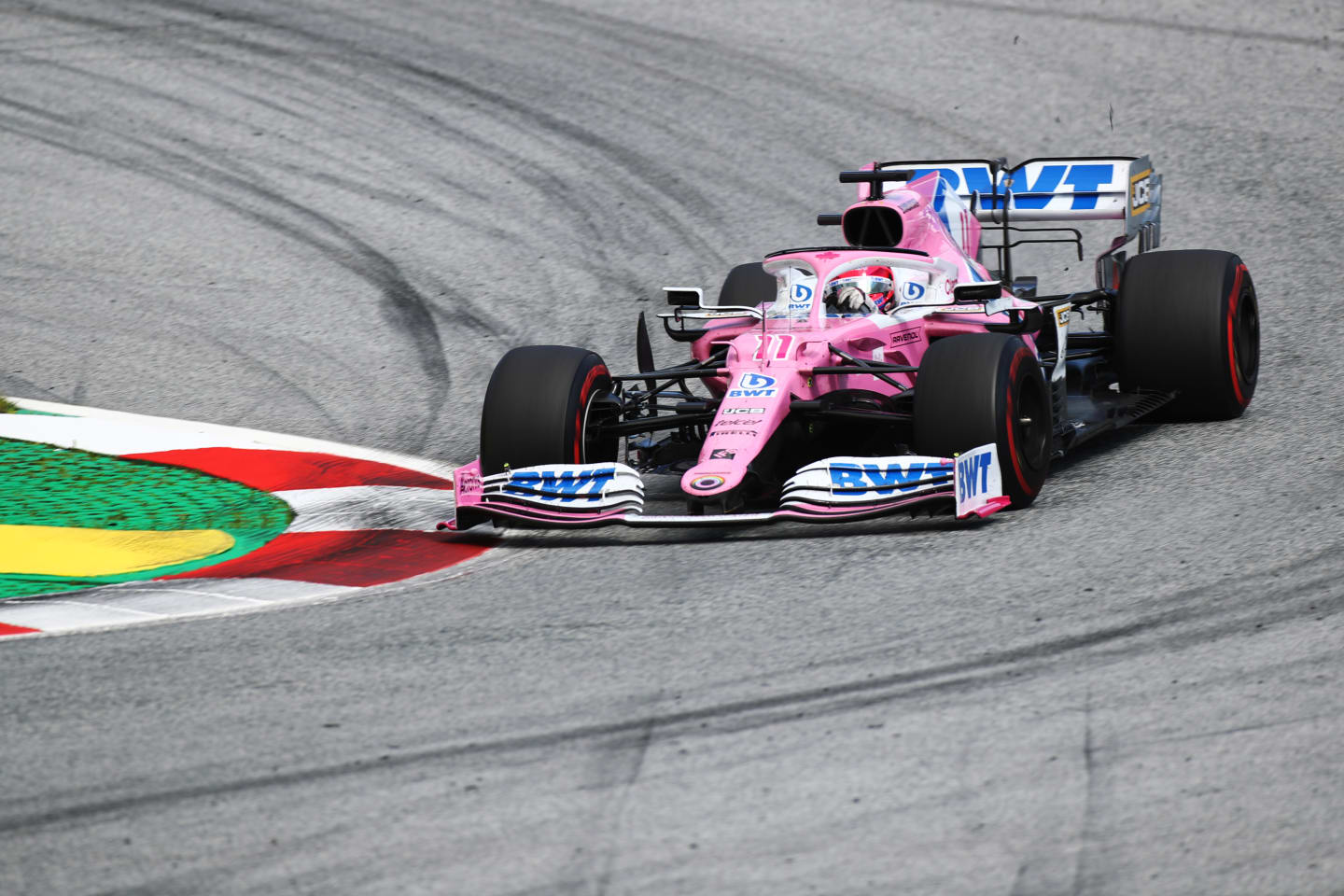
Racing Point insist their RP20 was designed entirely in-house
“What you see [on the RP20] is what people have drawn from looking at pictures of Mercedes. We've utilised what we can see. There’s other teams taking pictures. There's a pit lane full of photographers employed by the teams to take pictures of other peoples’ teams. All we did was utilise that information.”
Nevertheless, there was disquiet among the other teams, and that came to a head on Sunday when Renault lodged their protest with the stewards, after Sergio Perez and Lance Stroll finished sixth and seventh in the race ahead of Daniel Ricciardo in eighth.
Specifically, Renault protested the front and rear brake ducts of the Racing Point RP20 on the grounds that they appear identical to those of last year’s Mercedes W10. This year – for the first time – brake ducts are classed as listed parts, which means they should have been developed by the team of whichever car they are fitted to (or bought from an outside supplier, not an existing F1 team).
The race stewards ruled that Renault’s protest was admissible, clearing the way for the FIA to impound the offending items and request Mercedes to provide samples of their 2019 ducts for the purposes of comparison.
1 / 2
As can be seen by the images above, there is a remarkable visual resemblance between the 2020 Racing Point ducts and those of the 2019 Mercedes. That does not necessarily mean they are identical internally, but it is not yet known if that is the basis of Racing Point’s insistence that it is fully within the regulations.
It's important to remember that brake ducts don’t just cool the brakes. They form a crucial part of the aerodynamic flow around the whole car. Because the entire RP20 design has been heavily based upon the Mercedes W10, it would be particularly difficult to conceive ducts that were different but which did not have an adverse effect in the car’s aerodynamic performance. The ducts and bodywork are developed as one, so if Racing Point were forced to change their design it could have massive implications on their performance.
Looking at both versions of the rear duct, it can be seen that the inlet and drum appear identical. They also share a winglet mounted to the right of the inlet. The cooling air enters the inlet and is then divided into separate channels by the dividers which can be seen.
Some is directed to cool the disc itself, some onto the callipers, some to assist cooling of the wheel rim so as to help control the critical rear tyre temperature.
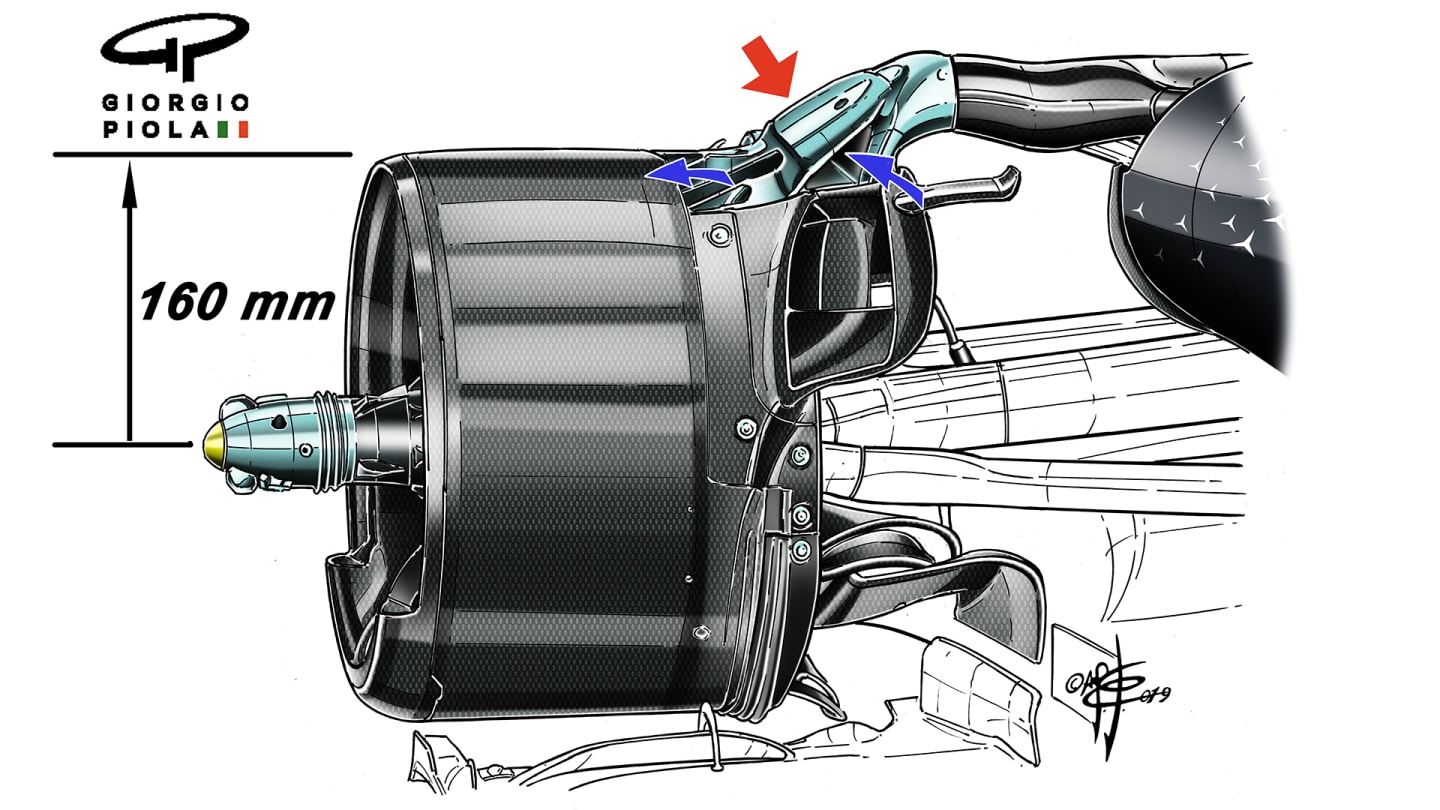
The rear brake ducts used by Mercedes on their W10 at the 2019 US Grand Prix
A smaller, separate inlet above, directs air between the enclosing drum and the wheel rim, purely for tyre temperature control. The winglet mounted to the side of the inlet provides a small measure of direct downforce straight to the suspension upright.
There is at least broad similarity between each of the front ducts too. These are designed in such a way as to feed a highly intricate wheel rim design to extract the air with considerable force, which helps boost the outwash airflow around the front tyre.
Racing Point maintains that Renault’s protest is ‘misconceived and poorly informed’ but what will the stewards decide after analysing the ducts inside and out? Racing Point – and the rest of us – now await their decision...
READ MORE: The Winners and Losers of the 2020 Styrian Grand Prix
YOU MIGHT ALSO LIKE

Video HIGHLIGHTS: Watch the action from the Chinese Grand Prix as Verstappen takes victory while Safety Car sparks dramatic restart
News Hamilton ‘grateful just to get points’ in China as Russell admits Mercedes have ‘work to do’ before Miami
News Alonso reflects on ‘crazy race’ in China after nearly crashing while Stroll gives his take on penalty for ‘weird’ incident
News Perez rues bad luck with Safety Car in China after missing out on P2 as he vows to fight back in Miami

